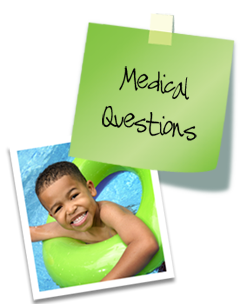Colds & Ear Infections
As winter approaches, many parents become concerned about the increase in colds and accompanying ear infections. When should I worry? When should I seek the care of a physician? The average child has 8-10 colds per year. Each cold usually lasts 10-14 days. It usually begins with a clear runny nose accompanied by fever for the first few days. By about 5-7 days, the clear mucous turns thick and yellow or green, only to become clear again at the 10-14 day mark before going away completely.
Colds can predispose children to ear infections. There is a tube, called the eustachian tube that drains the inner ear to the back of the throat. This tube allows fluid to drain from the ear. In young children, this tube is parallel to the ground and has a small diameter, prohibiting it from draining well. Congestion or swelling from a cold can block this tube at its opening, preventing drainage. The clear fluid behind the ear drum in this inner ear space is usually temporary and not problematic, unless bacteria get into this fluid and forms pus. This is an ear infection.
A cold usually precedes an ear infection. Signs of an ear infection typically occur 5-7 days into the cold. They include new fever, fussiness, especially at night and decrease in appetite. Pulling at ears can also occur, although many other things can lead kids to play with, rub or pull their ears. Children with
Treat colds symptomatically for the first few days. Use a humidifier or cold mist vaporizer by the child’s bet at night. Acetaminophen and ibuprofen are also helpful, especially with fever and fussiness. Over the counter decongestants are sometimes helpful in children older than the infant, and can help the eustachian tube open and drain. If fever and fussiness develop 5-7 days into the cold, then consider a secondary infection like an ear infection. Your physician can help you should you become concerned.
